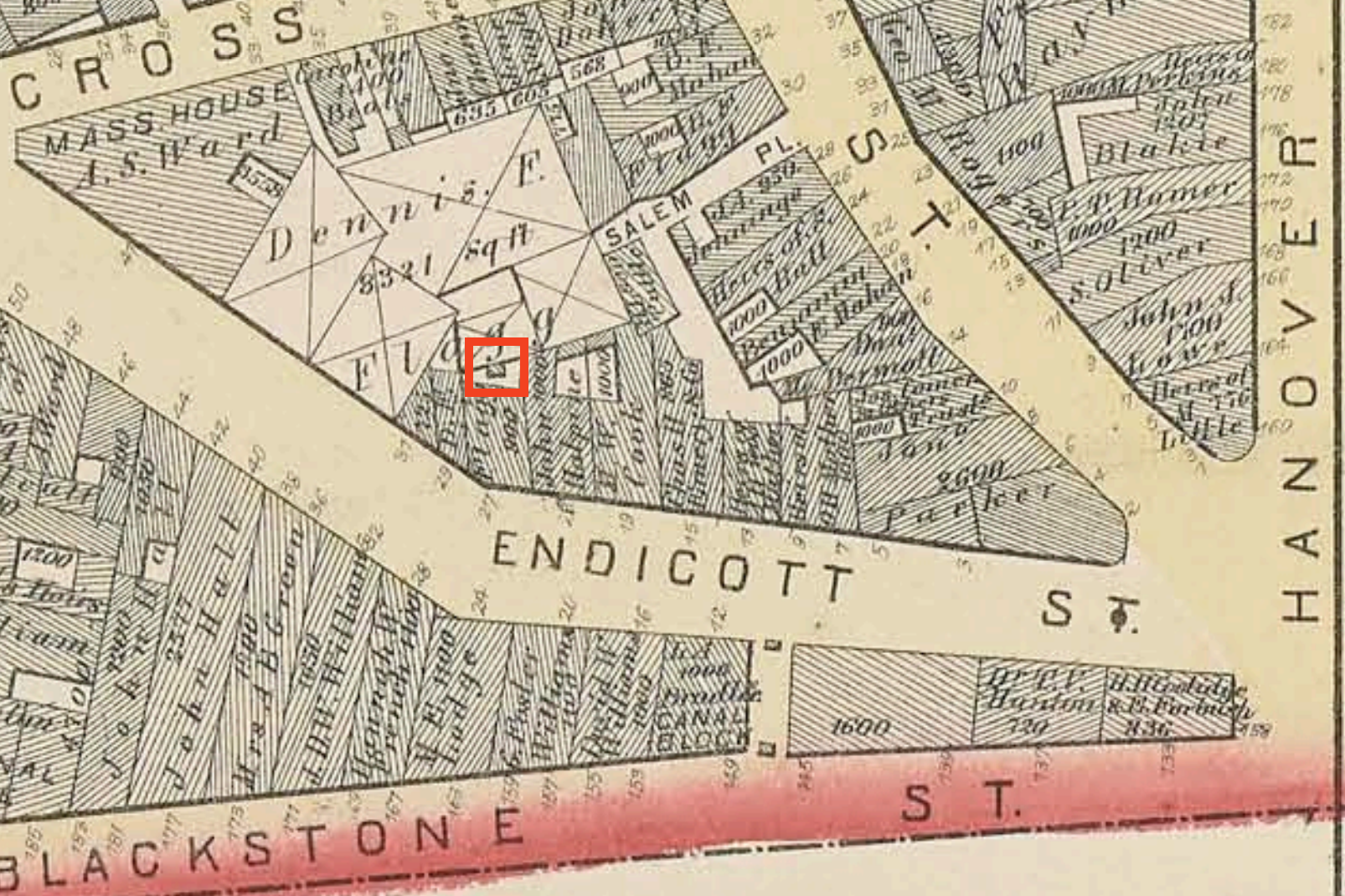Endicott Street Brothel
In the early 1990s, archaeologists excavating ahead of the Central Artery Project (Big Dig) uncovered the privy of a mid-19th century brothel. The brothel was located at 27-29 Endicott Street in the North End.
The site
Like most of Boston, this area has been occupied for millennia, beginning with the Massachusett Tribe. In the early 17th century, colonial settlers changed the landscape to harness the tidal waters of the cove to power several mills. A diverse neighborhood grew around the mills over the next century. People built homes and wharves along the waterfront.
The town began to fill Mill Pond starting in the early 1800s and continuing until 1828. They used horses and carts to transport soil from surrounding areas, dumping it into the tidal bay. This added 50 acres of land to the City, which was separated into lots and then sold. The neighborhood surrounding Endicott Street was meant for development into residential areas. It contained many multi-story residences. These were intended to house the working classes.
Eventually, much of this area was sold to industrial and commercial entities. For nearly 40 years, 27-29 Endicott Street functioned as a tenant building. From 1852-1867, it was a brothel managed by a succession of three madams. The building was occupied solely by female tenants.
The dig
Archaeologists discovered a privy at 27-29 Endicott Street during work at the Mill Pond archaeological survey for the Central Artery Project. This project was known locally as “The Big Dig”. The 19th-century privy was not old enough to meet the cutoff put in place by the Massachusetts Historical Commission. So, it was not excavated as part of the Central Artery Project. Instead, the archaeologists volunteered their time to conduct data recovery of the privy for this clearly significant site.
The 1867 Sanborn Fire Map included the small wooden building that functioned as the building’s privy. But, it is absent in the 1885 Sanborn map. This led researchers to believe that it had been abandoned by that time because indoor plumbing was becoming more common.
It was a 4.5-by-8.5-foot brick-lined, double-chambered small rectangular cellar-like structure. It lay under the privy’s toilets and collected the human and household waste from the building. The surviving portions of the privy reached a depth of 4 feet from the ground surface at excavation. But, it likely would have been around 6 feet deep. Six feet was the legally required depth of privies at the time.
The results
The excavation of the privy yielded 8,140 artifacts. They included:
- alcohol bottles
- tea wares
- medical objects
- children’s toys
- jewelry
- cosmetics, and
- even glass feeders for caged birds.
The daily lives of sex workers were rarely recorded in polite 19th-century society. These artifacts provide a close-up look into the lives of the women who lived and worked in the brothel.
The excavation of the Endicott Street Brothel Privy has resulted in many publications. These include doctoral dissertations, master’s theses, journal articles, and a forthcoming book. They explore multiple research topics and different artifact types. Please see our collection of research documents to learn more about the lives of the women living in this 19th-century brothel.
The data
Artifact catalog
Artifact count: 8,140 artifacts
Complete spreadsheet catalog of the artifacts from the Endicott Street Brothel
Vessel catalog
Artifact catalog of the vessels recovered from the Endicott Street Brothel privy
Digital images
Omeka.net searchable artifact and image database
Endicott Street Brothel artifact images and descriptions
Digital images
Omeka.net searchable artifact and image database
Searchable database of the vessels from the Endicott Street Brothel privy
3-D Images
Laser and Photogrammetry 3-D images of artifacts from the Endicott Street brothel privy
Interactive and downloadable 3-D images of artifacts
Related links
Archaeological Site Report for the Mill Pond Site (2000)
2018 dissertation of Dr. Jade W. Luiz
2015 dissertation of Dr. Alexander D. Keim
2012 Master's thesis of Amanda B. Johnson




